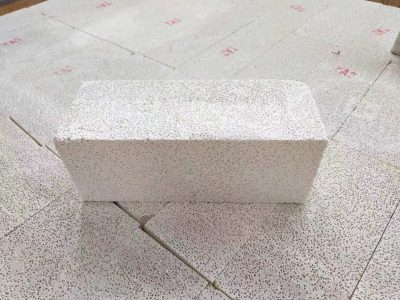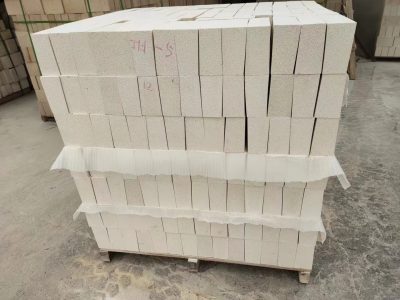Today, we are going to discuss a material that is crucial for industrial kilns – mullite thermal insulation bricks. In the kiln of up to 1300℃, this brick directly contacts the flame, but can stably play its dual role of fire insulation.

Introduction of mullite insulation brick
Mullite insulation brick with mullite (Al2O3·2SiO2) as the main crystalline phase of high alumina refractory. Generally, the alumina content is between 50% and 60%. In addition to mullite, the lower alumina content also contains a small amount of glass phase and cristobalite; Higher alumina content also contains a small amount of corundum. High refractoriness, up to 1790℃ or more.
Performance characteristics of lightweight mullite insulation brick
First of all, the density of lightweight mullite insulation bricks is usually in the range of 0.6-1.2g/cm³, and it has a lower weight than traditional materials, which not only makes the handling and installation process more convenient, but also reduces the burden of the equipment itself and improves the stability of the overall structure.
Secondly, the thermal conductivity of lightweight mullite insulation bricks is usually controlled in the range of 0.2-0.4W/(m·K), which means that it can effectively block the transfer of heat and maintain the stability of the internal temperature of the equipment. Whether it is used in hot blast furnaces, ceramic kilns or other high temperature equipment, it can play an excellent thermal insulation effect, thereby improving the operating efficiency of the equipment.
Moreover, although its density is low, it can still withstand high temperature erosion, and the fire resistance temperature can reach more than 1300℃. This feature allows it to maintain stable performance in a variety of high temperature environments.
Finally, lightweight mullite insulation bricks also have good corrosion resistance. It can resist the intrusion of various chemical erosion environments and maintain a long service life. Whether it is acid, alkali or other corrosive media, it can show excellent resistance.
Classification of mullite insulation bricks
Mullite insulation bricks are mainly divided into two categories: light mullite bricks and heavy mullite bricks. According to the temperature difference they withstand, these bricks can be subdivided into JM23 Mullite insulation bricks, JM26 Mullite insulation bricks, JM28 Mullite bricks and other products. Among these bricks, the names of light mullite insulation bricks such as JM23, JM26 and JM28 actually contain information about their fire resistance levels. The “JM” serial number here is an intuitive identification of their fire resistance.It is worth mentioning that the alumina content of light mullite insulation brick is an important measure of its quality. Taking Jm23, Jm26, Jm28 and Jm30 as an example, their alumina content is in the range of 38-44%, 50-58%, 65-70% and 70-73%, respectively. With the increase of alumina content, the thermal insulation performance and refractoriness of the brick will also be improved accordingly.So, how much can the refractory temperature of these bricks be achieved? JM23, JM26, JM28, JM30, JM32 and other lightweight mullite insulation bricks correspond to the fire resistance temperature of 1250℃, 1350℃, 1450℃, 1550℃ and 1650℃ respectively.
As a kind of high-quality refractory material, mullite insulation brick is widely used in various thermal equipment hot surface refractory lining or insulation layer. Whether it is in the production process of ceramics, glass and other materials, or in the heat treatment equipment in metallurgy, chemical industry and other fields, we can find the shadow of mullite insulation brick.

Application field of lightweight mullite insulation brick
First, it shows excellent heat resistance and stability as a lining material in high-temperature reaction equipment such as cracking furnaces and hot blast furnaces. Especially in ceramic roller kilns, electric porcelain drawer kilns and glass crucible, mullite-insulated bricks with their excellent thermal insulation properties ensure uniform sintering and efficient production of products.
In more complex equipment such as blast furnace, glass furnace regenerator, whether in the top, body or bottom of the furnace, it can effectively resist high temperature erosion and protect the equipment from damage. For oil cracking system furnace lining, mullite insulation brick is indispensable.
In addition, mullite insulation brick in melting furnace, firing kiln, flue, refining equipment, heating equipment and other occasions, not only can provide a stable insulation effect, but also can improve the overall operating efficiency of the equipment. In regenerative equipment, gas furnaces and pipelines, mullite-insulating bricks also show their strong adaptability, ensuring stable operation in high temperature environments.
